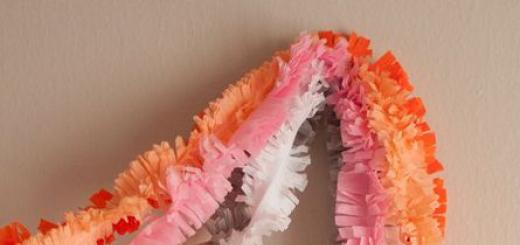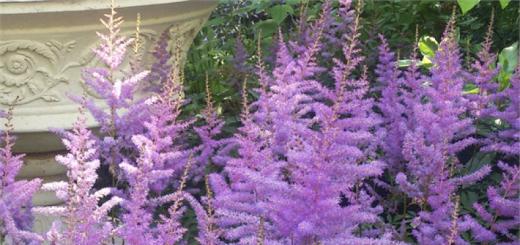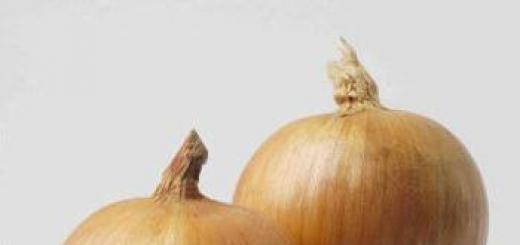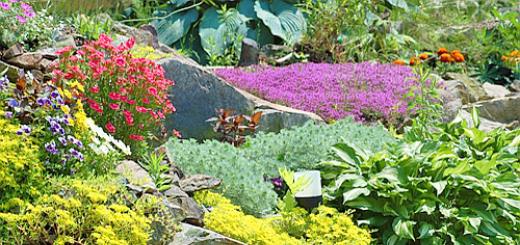Description
Impatiens glandularis is an annual plant. The stem is highly branched, thick, juicy, gnarled, reaching a height of up to 2 m. The leaves are ovate-lanceolate, reaching 6-12 cm in length, the edges are serrated with winged petioles, and in the upper part of the stem are collected in whorls of three. At the base of the leaves there are 2 stalked dark red glands.
The root is fibrous.
The flowers of Impatiens glandularis are simple, large, on long peduncles, collected in umbellate axillary racemes of 2-14 flowers. The flowers are 3-3.5 cm long, have different colors - white, pink, most often wine red. The smell of flowers is subtle and delicate. Impatiens glandulara flowers are pollinated by insects, usually bumblebees. Blooms from mid-summer until frost.
The fruit is an obovate capsule, sharp at the apex. When you touch a ripe fruit, the capsules tear off the placenta, twist into a spiral and scatter small brown-black seeds over a radius of up to 2 meters.
Comes from the Himalayas. Introduced as an ornamental plant, it is now widespread in forests of temperate latitudes. Prefers shady, damp places and grows along river banks.
Name
Like other plants of the genus Impatiens, Impatiens glandulara received its name from the property of ripe fruits to open with a bang: (Compare with the name Impatiens vulgaris lat. noli me tangere- “don’t touch me”), and from the presence of glands at the bases of the leaves.
Application
Impatiens ferruginata is used to decorate hedges, to decorate fences and gravestones. Lives for a long time in breeding areas, easily runs wild and spreads widely.
Gallery
Notes
Links
- Gubanov I. A. et al. 888. Impatiens grandulifera- Touch-me-not glandular // Illustrated guide to plants of Central Russia. In 3 volumes. - M.: Scientific T. ed. KMK, Institute of Technology. research, 2003. - T. 2. Angiosperms (dicotyledonous: dicotyledonous). - P. 542. - ISBN 9-87317-128-9
Wikimedia Foundation. 2010.
| 17px | 15px |
|
Impatiens ferruginosa(lat. Impatiens glandulifera) - annual herbaceous plant; species of the genus Impatiens. Other names: ferruginous balsam, iron-bearing balsam, iron-bearing balsam.
Description
Impatiens glandularis is an annual plant. The stem is highly branched, thick, juicy, gnarled, reaching a height of up to 2 m. The leaves are ovate-lanceolate, reaching 6-12 cm in length, the edges are serrated with winged petioles, and in the upper part of the stem are collected in whorls of three. At the base of the leaves there are 2 stalked dark red glands.
The root is fibrous.
The flowers of Impatiens glandularis are simple, large, on long peduncles, collected in umbellate axillary racemes of 2-14 flowers. The flowers are 3-3.5 cm long, have different colors - white, pink, most often wine red. The smell of flowers is subtle and delicate. Impatiens glandulara flowers are pollinated by insects, usually bumblebees. Blooms from mid-summer until frost.
The fruit is an obovate capsule, sharp at the apex. When you touch a ripe fruit, the capsules tear off the placenta, twist into a spiral and scatter small brown-black seeds over a radius of up to 2 meters.
Comes from the Himalayas. Introduced as an ornamental plant, it is now widespread in forests of temperate latitudes. Prefers shady, damp places and grows along river banks.
Name
Like other plants of the genus Impatiens, Impatiens glandulara received its name from the property of ripe fruits to open with a crash when touched (compare with the name Impatiens vulgaris lat. noli me tangere- “don’t touch me”), and from the presence of glands at the bases of the leaves.
Application
Impatiens ferruginata is used to decorate hedges, to decorate fences and gravestones. Lives for a long time in breeding areas, easily runs wild and spreads widely.
Gallery
Impatiens glandulifera pic1.jpg
Impatiens glandulifera pic2.jpg
Impatiens glandulifera pic3.jpg
Impatiens glandulifera pic4.jpg
Write a review about the article "Touchy glandular"
Notes
Links
- Gubanov, I. A. et al. 888. Impatiens grandulifera- Touch-me-not glandular // . - M.: Scientific T. ed. KMK, Institute of Technology. research, 2003. - T. 2. Angiosperms (dicotyledonous: dicotyledonous). - P. 542. - ISBN 9-87317-128-9.
An excerpt characterizing the Impatiens glandularis
“But Dean says that I’m good, and that I make him very happy!” – the little girl babbled more cheerfully. “And he wants to be friends with me.” And others I've met here are very cold and indifferent, and sometimes even evil... Especially those who have monsters attached...“Monsters—what?..” we didn’t understand.
- Well, they have terrible monsters sitting on their backs and telling them what they must do. And if they don’t listen, the monsters mock them terribly... I tried to talk to them, but these monsters won’t allow me.
We understood absolutely nothing from this “explanation,” but the very fact that some astral beings were torturing people could not remain “explored” by us, so we immediately asked her how we could see this amazing phenomenon.
- Oh, yes everywhere! Especially at the “black mountain”. There he is, behind the trees. Do you want us to go with you too?
- Of course, we will be only too happy! – the delighted Stella immediately answered.
To be honest, I also didn’t really smile at the prospect of dating someone else, “creepy and incomprehensible,” especially alone. But interest overcame fear, and we, of course, would have gone, despite the fact that we were a little afraid... But when such a defender as Dean walked with us, it immediately became more fun...
And then, after a short moment, real Hell unfolded before our eyes, wide open with amazement... The vision was reminiscent of the paintings of Bosch (or Bosc, depending on what language you translate it into), a “crazy” artist who once shocked the whole world with his art world... He, of course, was not crazy, but was simply a seer who for some reason could only see the lower Astral. But we must give him his due - he portrayed him superbly... I saw his paintings in a book that was in my dad’s library, and I still remembered the eerie feeling that most of his paintings carried...
“What a horror!..” whispered the shocked Stella.
One could probably say that we have already seen a lot here, on the “floors”... But even we were not able to imagine this in our most terrible nightmare!.. Behind the “black rock” something completely opened up unthinkable... It looked like a huge, flat “cauldron” carved into the rock, at the bottom of which crimson “lava” was bubbling... The hot air “burst” everywhere with strange flashing reddish bubbles, from which scalding steam burst out and fell in large drops to the ground, or to the people who fell under it at that moment... Heartbreaking screams were heard, but immediately fell silent, as the most disgusting creatures sat on the backs of the same people, who with a contented look “controlled” their victims, not paying the slightest attention to their suffering... Under the naked feet of people, hot stones turned red, the crimson earth, bursting with heat, bubbled and “melted”... Splashes of hot steam burst through huge cracks and, burning the feet of human beings sobbing in pain, were carried into the heights, evaporating with a light smoke ... And in the very middle of the “pit” flowed a bright red, wide fiery river, into which, from time to time, the same disgusting monsters unexpectedly threw one or another tormented entity, which, falling, caused only a short splash of orange sparks, and then but, turning for a moment into a fluffy white cloud, it disappeared... forever... It was real Hell, and Stella and I wanted to “disappear” from there as soon as possible...
Ferruginous balsam, or simply put, Impatiens, is a guest in our gardens from Africa and Asia. The plant is a good honey plant and is an annual. We note, however, that this plant is poisonous and is not very suitable for growing in gardens where children run and pets walk.
This type of plant is the largest of all balsams. This is a wild plant, therefore it is suitable only for garden cultivation, and is not intended for indoor floriculture. The plant is loved by gardeners and landscape designers for its decorativeness and unpretentiousness: ferruginous balsam looks great in both single and group plantings and can decorate borders, ridges, and flower beds.
Important! This type of balsam, unlike its southern counterparts, is found in our country in the wild. Its origin, in any case, is southern, but this species, having been domesticated at one time, was able to take root in our climate, and over time, thanks to self-seeding propagation, “went wild.”
The plant blooms from July until the onset of the first frost.
The plant reaches a height of two meters: its stems are straight, thick, succulent. The leaves are located at an equal distance from each other, alternately, have a shiny, smooth surface, jagged edges. The length of a regular balsam leaf is about 10 cm.
Ferruginous balsam is valued in gardening for its decorative flowers. The color of their petals is pink - it can be either pale or bright, saturated. The inflorescences themselves are quite large, collected in decorative tassels, further increasing the effectiveness of the plant. The length of one petal is approximately 3-3.5 cm.
Let us note the delicate aroma of this plant; it is thanks to its smell that ferruginous balsam attracts many pollinating insects and is a wonderful honey plant.
Landing
Let's get acquainted with the peculiarities of planting this ornamental plant, find out how to choose the right area for balsam, and how to plant it.
Location and lighting
Ferruginous balsam is a rather heat-loving plant.: its tropical origin affects. Therefore, when growing it from seeds, seedlings are transferred to a permanent place only when the threat of night frosts has completely passed.
The heat-loving nature of balsam limits the possibilities of its use in landscape design. It is definitely not suitable as an early decoration for the garden in spring.
Advice! If you plant several balsams at once, you should maintain a distance between bushes of approximately 25 cm. It must be taken into account that adult balsams are quite tall.
The plant loves good lighting and sufficient warmth. Diffused light rather than direct sunlight is best. The bed where balsam is planted must be securely sheltered from wind and drafts.
The plant does not tolerate dense plantings: balsam requires enough space for full growth and flowering. In addition, balsam sucks a lot of nutrients from the soil and with thickened plantings, all plants simply will not have enough microelements. If you still allow the plantings to thicken, the bed with balsam will become stunted, and flowering will stop soon after the buds open.
Although ferruginous balsam is not very demanding on the composition of the soil, it will feel better, grow and bloom on fertile soil. It is recommended to add peat to the soil to make the soil more nutritious and loose. Many gardeners also add river sand to make the substrate even lighter.
Acidic soil is not suitable for balsam: the soil should be as close to neutral acidity as possible. It is recommended to add ash or lime to the soil if the soil in the garden bed is too acidic. The optimal pH of the reaction is 5.5-6.3.
The nutritional quality of the soil is very important for this plant. In poor soil, the shrub will never reach its standard two-meter height, and its flowering will not be decorative enough.
Features of care
After planting, it is necessary to properly care for the plant so that it will delight you with its spectacular flowering for a long time. Let us consider further the main points of care.
Watering
Drought is unacceptable for balsam, since in such conditions its leaves begin to fall off. Balsam needs a lot of water: in the heat of summer, the soil in the garden bed should be constantly moistened. The usual watering schedule is once a day in hot weather and once every two days in cool temperatures.
Attention: do not allow the substrate to dry out so that the balsam does not lose its decorative effect.
Top dressing
During the period of active growth, ferruginous balsam experiences a lack of nutrients. Therefore, this plant needs feeding: Minerals should be added approximately once every ten days.
When buds begin to form, fertilizing with nitrogenous compounds should be stopped. The fact is that nitrogen has a good effect on the rapid growth of leaves, but has a negative effect on flowering. It is better to feed balsam with phosphorus and potassium during the flowering period.
When autumn comes, fertilizing must be stopped. Since ferruginous balsam is an annual, there is no point in fertilizing after flowering.
 Ferruginous balsam may well be infected with both diseases and harmful insects. Next, we will consider which of the threats pose the greatest danger to this plant.
Ferruginous balsam may well be infected with both diseases and harmful insects. Next, we will consider which of the threats pose the greatest danger to this plant.
But let us immediately note that the greatest threat to this flower is not viruses and fungi, but rather the low temperature outside. If the temperature drops to +5 degrees, and even more so if even short-term frosts occur, the balsam will not survive.
As for harmful insects, the greatest danger to this plant is:
- spider mite;
- whitefly
Control insects with insecticides.
Problems during cultivation
Ferruginous balsam loves good care. And in the absence of one, it can react in a negative way and lose its decorative effect. Next, we’ll find out what problems can arise when growing this plant, and what to do about these problems.
Falling buds
This fact indicates a lack of moisture in the soil or air. To stop the process, water the balsam and spray the air around it.
Doesn't bloom
If the plant refuses to bloom, the reason is most likely an excess of nitrogen fertilizers. Sometimes the reason is infertile, poor soil. To correct the situation, nitrogen should be excluded from fertilizing and emphasis should be placed on potassium-phosphorus supplements.
Falling leaves
With this symptom, the flower reacts to any flaws in care: lack of lighting, heat, water, nutrients. As the plant ages naturally, its leaves also fall off.
Withering
In this case, the cause can be either relatively safe and consist of a lack of water, or it can be fatal, consisting of rotting roots.
Reproduction
Ferruginous balsam can be propagated both by seeds and cuttings. Let's consider both methods.
Thanks to the possibility of cuttings, you can make a perennial from an annual balsam (read more about what annual and perennial balsam are). To do this you need:

Note that cuttings can be taken not only in autumn, but also in summer, using new plants to increase the total number of shrubs on the site and obtain more lush, decorative greenery.
Seeds
- To propagate a flower by seeds, the latter are planted in moist soil.
- The box with seeds must be covered with polyethylene to create more suitable greenhouse conditions for them.
- When the shoots appear, the film must be slowly removed, gradually hardening the shoots.
- After the frosts stop outside, the sprouts are transplanted to the garden bed. The first days after transplanting, it is recommended to cover the bed with film so that the adaptation of the seedlings to the street is more gentle.
Interesting: the plant can reproduce perfectly by seeds and on its own, eventually forming real balsam thickets on the site. So-called self-seeding is a common phenomenon for this flower.
Conclusion
So, we got acquainted with the features of growing such a garden plant as ferruginous balsam. This representative of the southern flora is quite thermophilic., but it’s not too picky about care, so it won’t cause much trouble for the gardener. But its decorative flowering can bring a lot of pleasure to both the owner of the balsam and his guests, ordinary passers-by.
If you find an error, please highlight a piece of text and click Ctrl+Enter.
(Balzaminaceae family) belongs to a large genus, which is called Impatiens. It has over 500 plant species. The garden “career” of these plants developed with varying success: there was a time when they were admired, and then undeservedly forgotten.
Today, they are again attracting the attention of gardeners and flower lovers. Yellow, purple, crimson, long flowering are the main distinguishing features of these plants.
Spreading
The impatiens are native to the Himalayas. It was brought in as an ornamental plant. Prefers moist, shady areas and grows along the banks of rivers and lakes. The plant grows under natural conditions most often in tropical Africa and Asia, some representatives of the genus grow in America and Europe.
In our country, almost everywhere you can find impatiens vulgaris with small or large yellow flowers, as well as glandular flowers, in which we will talk about them in this article.

Name
The name of the genus Impatiens consists of two Latin words: im, which means “no”, and patiens, which translates as “endure”, “endure”. Thus, the genus name means “a plant that does not tolerate being touched.” It comes from the property of this plant to respond to the slightest touch.
Impatiens vulgare
Herbaceous up to 80 cm high with an erect succulent stem and fibrous branched root. The leaves are petiolate, alternate, with large teeth along the edge, oval.
The flowers are drooping, irregular, with a spur, usually collected in racemes. The fruit is an oblong capsule. During ripening, when you touch it, it cracks and forcefully throws out the seeds contained inside. Impatiens vulgaris blooms from the second half of June until the end of September. Prefers damp, shaded areas and forms impenetrable thickets.

The chemical composition of this plant has not yet been sufficiently studied. It is known for certain that during flowering, impatiens contain 68.5% vitamin C.
Use of impatiens vulgare
The plant is used only by traditional healers. An infusion of the herb is taken as an anti-inflammatory and diuretic for diseases of the bladder, kidneys, edema, and kidney stones. In addition, it is also used as an emetic. Wounds and ulcers are washed with infusion of herbs. Baths with infusion give a good effect for joint pain. Crushed leaves are applied to bruises and hemorrhoids.

Impatiens vulgaris has long been successfully used by folk healers. For medicinal use, the plant is cut off entirely during flowering. Dry the raw materials by laying them out in the shade or in a well-ventilated area. Impatiens is used for external and internal bleeding, for stones in the bladder and kidneys.
Preparing the infusion
Brew two tablespoons (tablespoons) of crushed raw materials into 500 ml of boiling water in a thermos. Leave it to steep for five hours. After this time, strain. Take the product warm. During the day you need to drink 200 ml of the product in equal parts. Impatiens acts on the uterus, causing its intense contraction with heavy bleeding. In addition, this infusion is recommended for the treatment of bleeding from the bladder and rectum. It is used externally to treat ulcers, wounds, and hemorrhoids.
Impatiens vulgaris is a honey-bearing, medicinal, dyeing and poisonous plant. You shouldn’t get carried away with self-medication, even if someone you know advises you to “drink weed.”
Impatiens glandular: description
This is also an annual. Grows up to two meters. The stems are straight, have internodes, often transparent, juicy, filled with juice. The leaves are alternate, elliptical in shape, entire. The plate is shiny and delicate. Their length is 10 cm, the edges are jagged.
The second name of the plant is ferruginous balsam (iron-bearing balsam). The stem of the plant is thick, highly branched, knotty, and succulent. The leaves are ovate-lanceolate and can reach 12 cm in length. They are serrated along the edges, with winged petioles. At the top of the stem they gather in whorls.

The wine-red, white, and pink flowers of this type of impatiens are large, simple, and collected in umbrella-shaped clusters of 10-14 pieces. The petals are 3-3.5 cm long. The flowers have a delicate and delicate scent and are pollinated by various insects, but most often by bumblebees.
Impatiens glandular has interesting features. During flowering, its leaves secrete drops of sweet and aromatic juice along the edges, which forms sugar crystals upon evaporation. They attract ants. During flowering, the peduncles lengthen significantly and hide, like under an umbrella, under the leaves, protecting the flowers from the rain.

The diameter of the flower (with sufficient heat and moisture) is 3 cm. In dry years, impatiens glandular is covered with small flowers, although in large quantities. They are more closed, but when the seeds from these flowers fall into a fertile environment, they produce beautiful large, well-developed flowers.
The fruit is an oblong multi-seeded juicy capsule, which consists of five valves. During ripening, the junctions of the valves become weak, and the capsule is constantly under tension. If you slightly shake the stem or slightly touch the capsule, it immediately breaks with a bang, and the dark brown seeds are scattered with force over a distance of up to two meters. Many new plants grow from them every year. Seeds are dispersed by birds and animals over long distances. They do not lose their viability for eight years.

Touchy and magic
In ancient times, it was believed that the impatiens glandular was capable of magically opening locks and destroying prison bolts with one touch. It was believed that the flower could tear gold and silver, iron and copper into small pieces. Thieves who found a touch-me-not made a cut in the palm of their hand, inserted grass into it, and then healed the wound. At the touch of such a hand, locks allegedly fell from the doors.
People believed that everyone who simply carried this plant in their pocket was reliably protected from any bullet. This herb, thrown into the enemy’s forge, deprived him of the ability to forge iron. But not every touch-me-not had magical properties, but only those that were obtained in compliance with special rituals.
It was necessary to find a hollow in which the woodpecker had built a nest, and at the same time there were already chicks in it. Then we had to wait for the mother bird to fly away, and then close the nest tightly. Seeing that the nest is closed, the bird will definitely bring an impatiens stem. With his light touch the hollow will open. At this moment, the observing person should have screamed loudly so that the frightened bird would drop the grass.
Breeding in the garden
Impatiens glandularis is the largest plant of its genus. It is rarely grown in rural front gardens, since it produces abundant self-sowing, often “runs away” behind the fence and forms solid thickets of succulent stems. And gardeners and owners of country houses love balsams. They look great in a border, edging, or as the centerpiece of a flower bed.

Impatiens can also become a perennial plant. If you grew it in the garden or on the balcony, cut the cuttings and grow the flower indoors in winter. The only drawback of this procedure is the falling of leaves in insufficient light.
It is best to plant impatiens in the garden, in a well-ventilated, fairly sunny location with soil rich in organic matter. Gardeners need to know that impatiens take a lot of nitrogen out of it, and therefore grow quite quickly. On poor soils they almost never reach their maximum size. Impatiens especially do not like thickening: the plants become stunted and flowering ends very quickly.
This type is not used in medicine. Gardeners need to be careful when working with this plant. The fact is that impatiens glandular is poisonous. And one more piece of advice. You should not plant this plant if there are small children in the family.
Page 1 - 5 of 5
With the help of which plant can you pick any locks, unlock any doors? Which flower will help you destroy the iron bars of the dungeon and escape to freedom? Where to look for that magical herb that can leave a blacksmith without work? In foreign lands or on nameless islands? Do not know? And our Slavic ancestor would have immediately pointed exactly in the right direction - to the neighboring forest...
It may be hard to believe, but popular belief endowed such mystical power with the most common plant growing in all our forests - impatiens. Yes, yes, the same one that we meet during a picnic in the forest and whose yellowish flowers flicker between the trunks while walking through a shady park. And what's mysterious about that? But first, seriously.
Impatiens is a fairly large genus of flowering plants in the balsam family (Balsaminaceae), numbering about 300 species. The genus is widely represented in the Northern Hemisphere and the tropics. However, in central Russia, 3 types of impatiens are common: common (Impaties noli-tangere), small-flowered (Impaties parviflora) and glandular (Impaties glandulifera).
All of them are annual plants, with erect, branched, succulent stems, thickened at the nodes. The leaves are alternate (in the case of impatiens glandulata, the upper part of the stem is collected in whorls of three), from oval to lanceolate, petiolate or almost sessile, coarsely toothed.
 The flowers are on long drooping peduncles, irregular; in the small-flowered and glandular impatiens they are located at the top of the stem, and in the common impatiens they are confined to the nodes, and hang down in such a way that they end up under the leaves, protecting them from raindrops.
The flowers are on long drooping peduncles, irregular; in the small-flowered and glandular impatiens they are located at the top of the stem, and in the common impatiens they are confined to the nodes, and hang down in such a way that they end up under the leaves, protecting them from raindrops.
The calyx consists of three sepals. In the common and small-flowered impatiens, the lateral sepals are small, and the rear sepals are modified into a spur, curved in the first and straight in the second. The glandular one does not have a spur. The corolla looks like a three-lobed one due to the fact that four of the five petals grow together in pairs, and the fifth petal, opposite the spur, is greatly expanded. The corollas of our impatiens vary greatly in color. In the common one it is bright yellow with red specks in the throat, in the small-flowered one it is light yellow, and the large flowers of the glandular one are white, pink, wine-red, with all color transitions, for which it is so valued by gardeners and landscape designers. Hidden inside the flower are five stamens, which are held together by the anthers, forming a kind of “cap” under the stigma of a single pistil.
The scent of our impatiens flowers is subtle, delicate, attracting many pollinators, but is most loved by bumblebees, since their long tongue is best suited for extracting nectar from a long spur.
 All species presented prefer shady, moist forests and fertile soils. They willingly settle under the protection of bushes along the banks of forest rivers, lakes, and ravines flooded with water. But they can also penetrate gorges and climb rocky slopes. The impatiens ferruginosa is generally quite a successful invader of territory. It is able to penetrate into disturbed natural communities - wastelands, landfills and dominate them, successfully reproducing.
All species presented prefer shady, moist forests and fertile soils. They willingly settle under the protection of bushes along the banks of forest rivers, lakes, and ravines flooded with water. But they can also penetrate gorges and climb rocky slopes. The impatiens ferruginosa is generally quite a successful invader of territory. It is able to penetrate into disturbed natural communities - wastelands, landfills and dominate them, successfully reproducing.
Currently, these species are found in all regions of central Russia, but come from different places. The common impatiens is our native species, the homeland of the small-flowered one is Central Asia, and the ferruginous one comes from the Himalayas. The latter was brought in as an ornamental plant, since it serves as an excellent decoration for hedges or for decorating fences. However, she turned out to be quite independent and easily escapes from the gardens.
 But, perhaps, the most interesting thing about the impatiens, which, in fact, is what all the mystery is connected with, is its fruit. It is an elongated box consisting of five doors. When the seeds ripen, the line of connection between the valves weakens so much that the lightest touch is enough for them to separate with a bang, sharply twist into a tight spiral, and scatter the seeds with great force over a radius of up to 2 meters!
But, perhaps, the most interesting thing about the impatiens, which, in fact, is what all the mystery is connected with, is its fruit. It is an elongated box consisting of five doors. When the seeds ripen, the line of connection between the valves weakens so much that the lightest touch is enough for them to separate with a bang, sharply twist into a tight spiral, and scatter the seeds with great force over a radius of up to 2 meters!
It is from this feature of the opening of the fruit that both the Russian name of the genus “impatiens” and the Latin specific epithet noli-tangere from noli me tangere, which means “don’t touch me,” came from. And our people have come up with so many names for this plant: jumper, nedotika, nezamayka, jumper, gap-grass, jump-grass and others.
In ancient times, when a person tried to live in harmony with nature, with a keen eye noticing any of its subtleties and features, he, of course, could not help but pay attention to such an original and spectacular feature of this plant. And since the gloomy forest world has always coexisted with magic and otherworldly creatures, the shade-loving, crackling, bursting impatiens naturally found its place in Slavic legends, as noted by both lexicographer V. Dal and ethnographer M. Zabylin.
 It was claimed that the grass flower was capable of magically opening any locks, destroying shackles, and breaking prison bars with one touch. The flower is capable of tearing iron, gold, silver, copper and other metals into small pieces.
It was claimed that the grass flower was capable of magically opening any locks, destroying shackles, and breaking prison bars with one touch. The flower is capable of tearing iron, gold, silver, copper and other metals into small pieces.
The thieves, when they managed to get this herb, cut their palm, inserted it inside the cut and healed the wound. From one touch of such a hand, locks themselves fell off doors and chests. And if you just carry a flower in your pocket, then neither a bullet nor lead can hurt its owner. Grass thrown by enemies into the forge will deprive the blacksmith of the opportunity to cook and forge iron.
However, not every impatiens has such properties, but only those obtained in a special way. First you need to find a hollow where the woodpecker has built a nest, and that there will certainly be chicks in it. Then you had to wait for the bird to fly away and seal the hollow tightly. Seeing that the hollow is plugged, the bird will return with a stem of grass in its beak, and with a light touch of the flower the plug will fly out. At this moment, the observer should have screamed with all his might, causing the frightened bird to drop the miraculous herb. Similarly, you can get grass with the help of a turtle, no matter how funny it may sound for our strip.
So, as we see, even the most ordinary plants can turn out to be unknown and full of secrets with a sufficiently rich imagination. The main thing is to look inquisitively at the world around you, so as not to miss interesting details.










